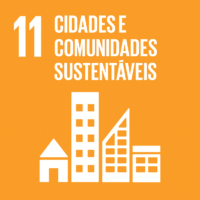Ciência-IUL
Publicações
Descrição Detalhada da Publicação
Tangible Interaction for Conceptual Architectural Design
Proc ART02, “The First IEEE International Augmented Reality Toolkit Workshop”, Darmstadt, Alemanha
Ano (publicação definitiva)
2002
Língua
Inglês
País
Alemanha
Mais Informação
Web of Science®
Esta publicação não está indexada na Web of Science®
Scopus
Esta publicação não está indexada na Scopus
Google Scholar
Esta publicação não está indexada no Google Scholar
Abstract/Resumo
This work reports and experiments a tangible mixed
Reality system for Architectural Design usage scenarios,
such as Conceptual Design, Client Brief, or Architectural
Design Education. The system provides the means for
the architect to intuitively interact with an augmented reality
version of a real scale model, in normal working settings,
where he can observe 3D virtual objects registered to the
real ones. intuitive tangible interfaces, implemented with
paddles, are used to aid design and editing tasks in /he
mixed environment. By means of paddle gesturing
recognition, it is possible to activate a menu, browse and choose menu options or pick, move rotate and scale 3D virtual objects, within the scale model working area. To
transport the user from Augmented Reality to Virtual Environment (supporting real-time scene
navigation, while in VR mode) and back, paddle
gesturing recognition is also used. Complex
architectural designs, described in the VRML 97 data
format can be imported into our system. which provides
o platform for testing new design concepts while
seamlessly transporting the Architect in a truly Mixed Reality Environment: from Reality (RE) to Augmented Reality (AR)and then through Augmented Virtuality
(AV), towards a full Virtual Environment (VE) and back.
Agradecimentos/Acknowledgements
--
Palavras-chave
augmented reality,human computer interaction,ARToolkit,MX Toolkit
Classificação Fields of Science and Technology
- Ciências da Computação e da Informação - Ciências Naturais
- Engenharia Eletrotécnica, Eletrónica e Informática - Engenharia e Tecnologia
- Outras Humanidades - Humanidades
Prémios
Prémio Melhor Demonstração
Contribuições para os Objetivos do Desenvolvimento Sustentável das Nações Unidas
Com o objetivo de aumentar a investigação direcionada para o cumprimento dos Objetivos do Desenvolvimento Sustentável para 2030 das Nações Unidas, é disponibilizada no Ciência-IUL a possibilidade de associação, quando aplicável, dos artigos científicos aos Objetivos do Desenvolvimento Sustentável. Estes são os Objetivos do Desenvolvimento Sustentável identificados pelo(s) autor(es) para esta publicação. Para uma informação detalhada dos Objetivos do Desenvolvimento Sustentável, clique aqui.

 English
English


